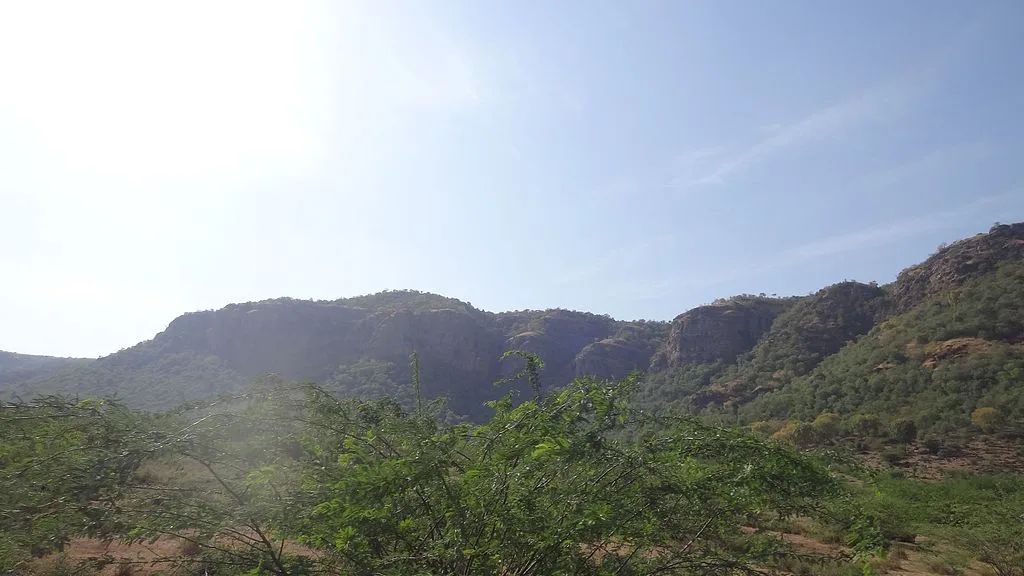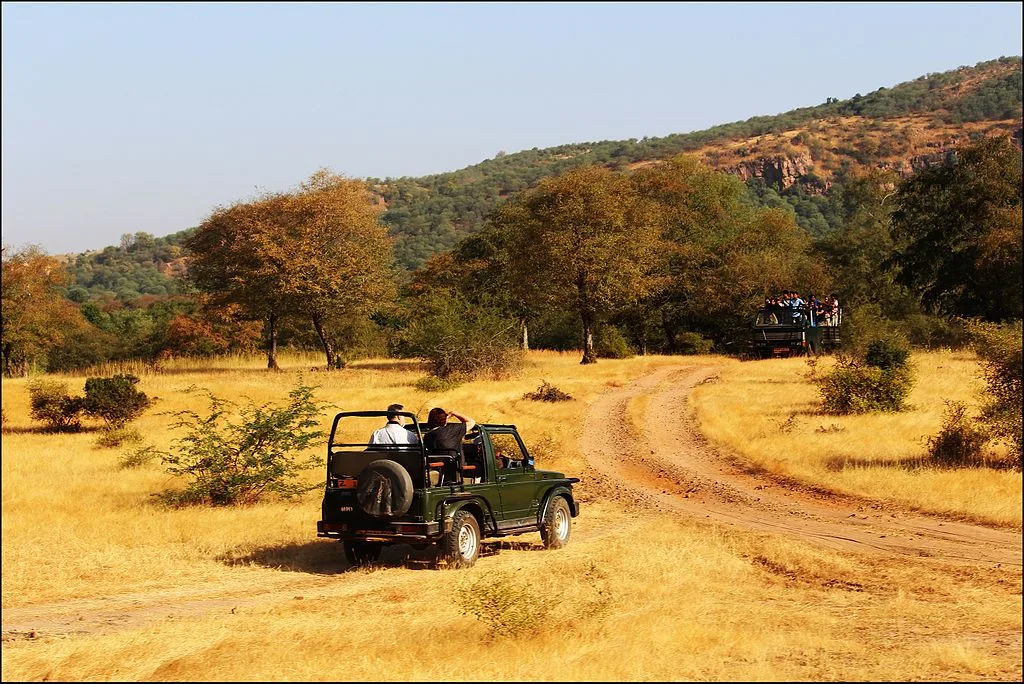Welcome to the captivating realm of Ranthambore National Park! Nestled in Rajasthan, India, this enchanting sanctuary beckons wildlife enthusiasts and photographers alike and is considered one of the best national parks in Rajasthan. Verdant forests, expansive grasslands, and serene lakes set the stage for unforgettable encounters with majestic creatures. The park’s crown jewel, the elusive Bengal tiger, gracefully roams these ancient lands, captivating visitors with its raw beauty and regal presence.
Beyond tigers, a diverse array of fauna, including leopards, sloth bears, and myriad bird species, thrive in this biodiverse paradise. Embark on a thrilling journey through Ranthambore’s untamed wilderness, where every moment offers a glimpse into the untamed wonders of the animal kingdom. Let’s delve into the heart of this wilderness and capture its essence through the lens, of immersing ourselves in the natural symphony of life at Ranthambore National Park.
History of Ranthambore National Park

Ranthambore National Park boasts a captivating history steeped in royal legacy. Initially, it served as a hunting ground for the Maharajas of Jaipur. In 1955, it gained protection under the Indian government as Sawai Madhopur Game Sanctuary. Later, in 1973, the sanctuary was declared one of India’s first Project Tiger reserves, a pioneering effort to conserve the endangered Bengal tiger.
Over the years, the park expanded, incorporating neighboring areas and diverse ecosystems. Today, the park’s rich heritage and commitment to conservation make it a vital stronghold for wildlife protection. With the tireless efforts of park authorities and local communities, Ranthambore has become a symbol of successful conservation, offering a safe haven for various species and an awe-inspiring destination for wildlife enthusiasts and nature photographers from around the world.
Flora and Fauna at Ranthambore National Park

Ranthambore National Park is a biodiverse haven teeming with captivating flora and fauna. The park’s rich deciduous forests harbor a wide variety of plant species, from dhok and banyan trees to various grasses and shrubs. It’s the realm of the majestic Bengal tiger, the park’s most renowned inhabitant. Alongside tigers, leopards, striped hyenas, and sloth bears also roam freely, enchanting visitors with their elusive presence.
The park is home to diverse avian wonders, with over 300 bird species, including the Indian grey hornbill, crested serpent eagle, and painted stork. The tranquil lakes within the park attract a multitude of water birds, making it a paradise for birdwatchers. Ranthambore’s ecosystem also supports reptiles like marsh crocodiles and pythons, adding to its fascinating biodiversity. A visit to this extraordinary sanctuary promises an unforgettable encounter with nature’s most splendid creations and a chance to capture their beauty through the lens.
Safari Experience at Ranthambore National Park

The safari experience at Ranthambore National Park is a thrilling adventure that brings visitors up close and personal with the mesmerizing wildlife. Safaris are conducted in open-top jeeps or canters, allowing for unobstructed views and excellent photo opportunities.
Embarking on an early morning safari offers the chance to witness the jungle come alive with the first rays of the sun. The park’s inhabitants begin their daily routines, and the air is filled with anticipation. As the jeep sets off on the safari route, the excitement builds, hoping to catch a glimpse of the elusive Bengal tiger.
The experienced guides and drivers possess an intimate knowledge of the park, enhancing the safari experience with their insights and tracking skills. They adeptly navigate through the park’s rugged terrain, following signs of recent animal activity and heading toward known tiger territories.
While the park is renowned for its tigers, there’s much more to discover. Leopards, sloth bears, jackals, and an array of deer species can be spotted during the safari. The picturesque landscapes of dense forests, rocky outcrops, and serene lakes add to the allure of the safari, creating picture-perfect scenes at every turn.
A typical safari lasts for around three to four hours, providing ample time to explore the park’s diverse ecosystems and encounter its charismatic residents. As the safari draws to a close, visitors can’t help but feel a deep sense of awe and appreciation for the natural beauty and wildlife that thrives in Ranthambore National Park.
It’s essential to adhere to the park’s regulations and maintain a respectful distance from the animals during the safari. Responsible tourism ensures that this wildlife haven remains protected for generations to come, allowing future visitors to experience the magic of Ranthambore just as we do today.
How to Reach Ranthambore National Park
Reaching Ranthambore National Park is convenient and accessible through various modes of transportation. If you’re traveling by air, the nearest airport is Jaipur International Airport, approximately 180 kilometers away. From the airport, you can hire a taxi or use public transportation to reach the park. For those preferring train travel, the closest railway station is Sawai Madhopur, merely 11 kilometers from the park’s entrance. From the station, taxis and auto-rickshaws are readily available for a short ride to the park.
Additionally, Ranthambore is well-connected by road, making it easily reachable by car or bus from major cities in Rajasthan and neighboring states. Several tour operators offer guided trips to the park, ensuring a hassle-free journey. Once you arrive, prepare to embark on an unforgettable wildlife adventure in the heart of Ranthambore’s untamed wilderness. Remember to plan your transportation in advance to make the most of your time and savor every moment in this captivating sanctuary.
Accommodation
Nestled within the captivating embrace of Ranthambore National Park are many accommodation options catering to a wide range of preferences and budgets. Whether you seek opulent luxury, rustic charm, or an immersive wildlife experience, Ranthambore has something to offer for every traveler.
For those yearning for a lavish retreat, luxury resorts stand as exquisite havens of indulgence. Pamper yourself in spacious rooms adorned with elegant decor and modern amenities, all while being surrounded by lush landscapes.
Boutique hotels dotting the park’s vicinity provide an intimate and personalized stay. These charming establishments often boast unique themes, offering guests a distinctive and memorable experience.
For the true nature enthusiast, wildlife lodges seamlessly blend with the surroundings, allowing guests to immerse themselves in the wilderness. The sounds of the forest become your lullaby, and the proximity to nature is an experience in itself.
For a more adventurous and exotic stay, tented camps offer a delightful fusion of luxury and camping. Imagine spending your nights under a canopy of stars, with all the modern comforts just a step away.
Travelers on a budget need not worry, as budget hotels and guesthouses provide comfortable and affordable options near the park entrance. Here, you can enjoy a pleasant stay without straining your wallet.
For those seeking an even more unique experience, the government-managed forest rest houses within the park premises offer a chance to live right in the heart of the wilderness. Wake up to the calls of the wild and step out to explore the park even before the sun rises.
Most accommodations come with in-house restaurants serving delectable cuisine, ensuring that your taste buds are as satisfied as your thirst for adventure. Additionally, many of these establishments arrange guided wildlife safaris, making your journey into Ranthambore’s thriving wildlife seamless and enjoyable.
As Ranthambore National Park remains a popular destination, it’s wise to make reservations well in advance, especially during peak tourist seasons. No matter where you choose to stay, each option promises a comfortable and memorable visit, allowing you to savor the magic of this enchanting wildlife sanctuary fully.
Best Time to Travel
The best time to travel to Ranthambore National Park is from October to April. During these months, the weather is pleasant, and wildlife sightings are at their peak. The cooler months of October to December offer a comfortable climate for exploring the park’s wilderness.
The dry season sets in from January to April, making it easier to spot wildlife near water sources. The absence of thick foliage during this period enhances visibility, increasing the chances of encountering majestic tigers and other elusive creatures. Avoid visiting during the scorching summer months from May to June when temperatures soar, and animals tend to stay hidden in the heat. Similarly, the park remains closed during the monsoon season from July to September due to heavy rainfall and potential flooding.
Plan your journey during the favorable months, and immerse yourself in the enchanting world of Ranthambore’s wildlife, capturing extraordinary moments that will stay with you forever.
Conclusion
In conclusion, Ranthambore National Park stands as a mesmerizing testament to India’s rich wildlife heritage. Its captivating history, biodiverse flora and fauna, and convenient accessibility make it a must-visit destination for nature enthusiasts and photographers alike. From the regal Bengal tigers to the colorful avian wonders, every moment spent in this untamed sanctuary leaves an indelible mark on one’s soul.
Whether staying in luxurious resorts, charming boutique hotels, or experiencing the thrill of tented camps, the accommodations at Ranthambore ensure a comfortable and immersive experience. As travelers venture into the heart of this captivating wilderness, they are greeted with a unique blend of nature’s magnificence and the allure of a bygone era. Ranthambore National Park beckons with open arms, inviting adventurers to embark on a journey of discovery, leaving them with cherished memories and a profound appreciation for the natural wonders of our planet.
